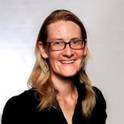Nature is commonly defined in counterpoint to the human. In contemporary society, we utilize nature for two main purposes: as material support for demographic and economic growth, and for aesthetic and recreational enjoyment. Belatedly, there emerged recognition of multifaceted crises facing nature, due to human exploitation, when Western governments began to implement environmental protection programs in the l 970s.1 But it was earlier in the twentieth century that the stark crisis facing nature already emerged clearly. In World War II, advances in science created unprecedented conditions of mass death employing tanks and artillery, aerial bombardment, nuclear explosions. Moreover, the first industrial genocide used the professional expertise of doctors, scientists, and administrators, to engineer deportations, gas chambers, and concentration camp labor. On a shocking scale, Holocaust history displays the manipulation of nature to create technologies of death and the devaluation of nature.
Contribution to Book
Vulnerable Bodies: Feminist Reflection on the Holocaust and Nature
Holocaust and Nature
Document Type
Contribution to Book
Publication Date
1-1-2013
Disciplines
Abstract
Editor
Didier Pollefeyt
Publisher
LIT Verlag
ISBN
9783643903136
Citation Information
Pinnock, S. K. (2013). Vulnerable bodies: Feminist reflection on the Holocaust and nature. In D. Pollefeyt (Ed.), Holocaust and Nature (pp. 167-191). LIT Verlag.
